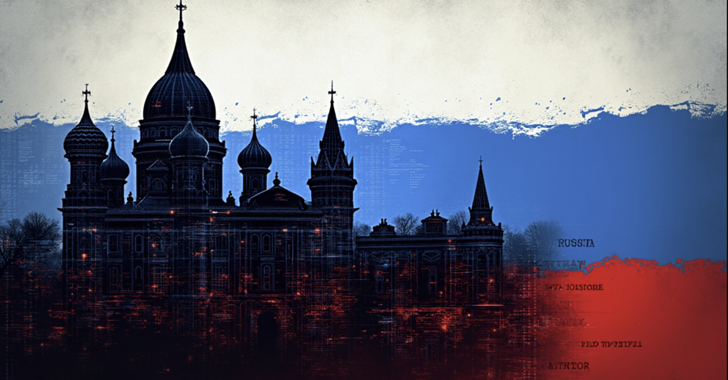In recent developments, the cyber threat landscape has witnessed the emergence of a sophisticated attack group known as Awaken Likho, which has been actively targeting Russian government agencies and industrial sectors. This campaign, which has been under observation since mid-2024, represents a notable shift in tactics and tools used by the group, highlighting the evolving nature of cyber threats.
Background of Awaken Likho
Awaken Likho, also referred to by other names such as Core Werewolf and PseudoGamaredon, first came into the spotlight in June 2023, with initial reports indicating that it was involved in cyber operations aimed at the defense and critical infrastructure sectors in Russia. The group is believed to have been active since at least August 2021, demonstrating a prolonged commitment to its objectives.
The group has gained attention for its well-crafted spear-phishing campaigns, utilizing social engineering tactics to distribute malicious executables disguised as benign documents. By manipulating file extensions, they manage to deceive users into opening harmful files, which subsequently compromise their systems.
Recent Campaigns
Kaspersky, a prominent Russian cybersecurity firm, reported that the latest campaign attributed to Awaken Likho began in June 2024 and has continued through at least August of the same year. The focus has primarily been on infiltrating Russian government bodies, their contractors, and various industrial enterprises. The choice of targets suggests a strategic intent to disrupt governmental operations and gather sensitive information.
One notable change in this campaign is the group’s preference for the legitimate MeshCentral platform over the previously used UltraVNC module for remote access. This transition signifies an adaptation in their methodology, likely aimed at evading detection by cybersecurity defenses that may be attuned to the older techniques.
Tactics Employed
The modus operandi of Awaken Likho involves deploying spear-phishing emails containing malicious attachments that masquerade as Microsoft Word or PDF files. These attachments often have double extensions—such as “doc.exe,” “.docx.exe,” or “.pdf.exe”—which allows only the recognizable portion of the file name to be visible to users, thereby increasing the likelihood of accidental execution.
Once a victim unwittingly opens one of these files, the malware is triggered, leading to the installation of UltraVNC or, in recent cases, the MeshAgent remote management tool. This installation grants the attackers full control over the compromised systems, enabling them to exfiltrate data, monitor activities, and further propagate their attacks.
Additionally, Kaspersky noted that the group has implemented a self-extracting archive (SFX) technique to obfuscate the installation process of their malware. The SFX, created using 7-Zip, is designed to appear innocuous, displaying a legitimate-looking document to the target while executing malicious code in the background. This method not only helps in maintaining stealth but also ensures persistence within the compromised system.
Specific Targets and Implications
Among the identified targets of Awaken Likho’s operations are Russian military bases and research institutes involved in weapons development. This focus on sensitive military and defense-related entities underscores the potential for significant implications not just for national security but also for the global balance of power.
By targeting critical infrastructure and defense organizations, the group aims to gather intelligence that could be used for strategic advantage or to disrupt operational capabilities. The implications of such attacks extend beyond immediate data theft; they raise concerns about the integrity of national defense mechanisms and the potential for large-scale cyber disruptions.
Evolving Cyber Threat Landscape
The actions of Awaken Likho exemplify the rapidly evolving cyber threat landscape. As cybercriminal groups adapt to countermeasures and security technologies, they continually refine their techniques, seeking new ways to exploit vulnerabilities. The shift from using familiar tools like UltraVNC to more sophisticated platforms like MeshCentral indicates a level of strategic thinking aimed at enhancing their stealth and effectiveness.
The advancements in their tactics also reflect a broader trend among advanced persistent threat (APT) groups, which are increasingly leveraging legitimate software to carry out their attacks. This not only complicates detection efforts but also poses challenges for cybersecurity professionals who must constantly update their defenses to keep pace with emerging threats.
Recommendations for Defense
In light of the ongoing threat posed by groups like Awaken Likho, organizations—especially those in critical sectors—must adopt a proactive approach to cybersecurity. Here are several key recommendations:
- Enhanced Training and Awareness: Regular training sessions for employees on recognizing phishing attempts and suspicious attachments can significantly reduce the risk of successful attacks.
- Email Filtering Solutions: Implementing advanced email filtering solutions that can detect and quarantine malicious attachments based on their file characteristics and behaviors can help prevent initial infection.
- Multi-Factor Authentication (MFA): Enforcing MFA across all systems can add an additional layer of security, making it more difficult for attackers to gain unauthorized access even if they compromise credentials.
- Regular Security Audits: Conducting regular audits and penetration testing can help organizations identify vulnerabilities and rectify them before they can be exploited.
- Incident Response Planning: Developing and regularly updating an incident response plan ensures that organizations are prepared to act quickly in the event of a cyberattack, minimizing potential damage.
Conclusion
The emergence of Awaken Likho as a formidable threat actor underscores the need for continuous vigilance in cybersecurity practices. As cyber threats become more sophisticated and persistent, organizations must adapt their strategies to mitigate risks effectively. The interplay between emerging technologies and the tactics of cybercriminal groups will likely continue to shape the future of cybersecurity, necessitating ongoing adaptation and innovation in defensive measures.

